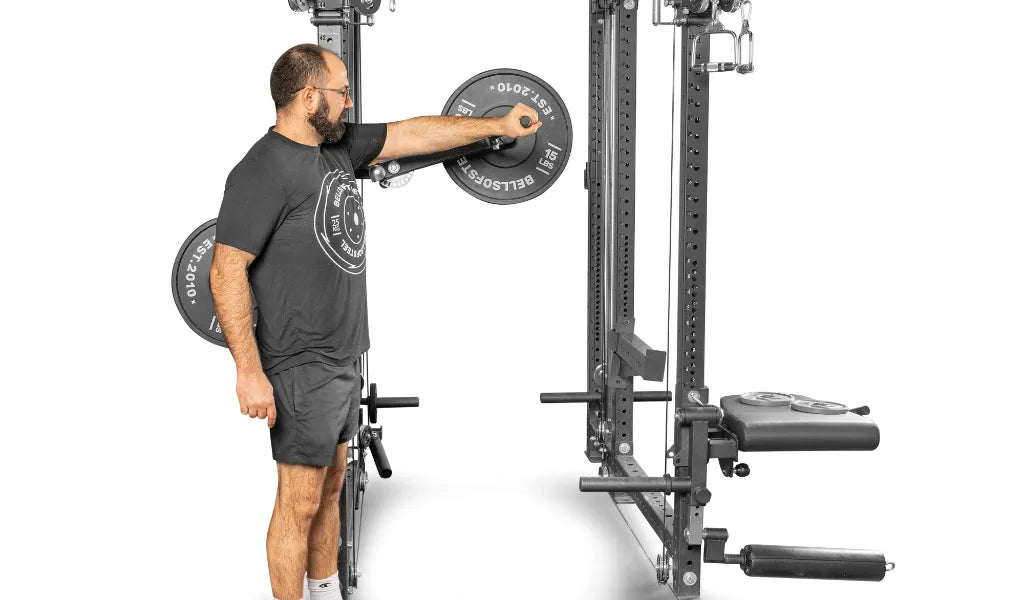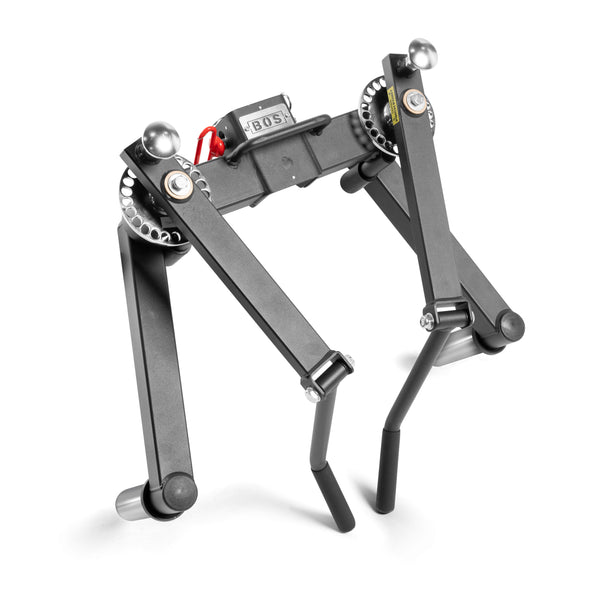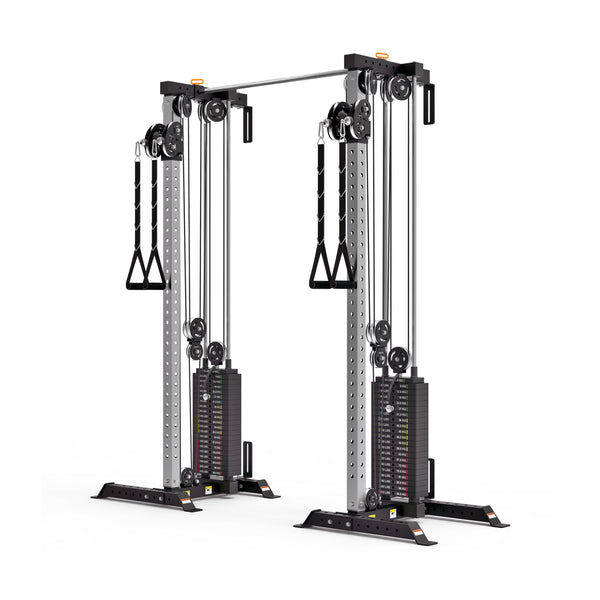When it comes to building those cannonball shoulders, side lateral raises are a staple in any solid training program. But not all lateral raises are created equal. Between machines, cables, and dumbbells, each has unique benefits—and drawbacks.
Let’s explore whether machine side lateral raises are worth incorporating into your routine, especially for home gym users, and why the Shoulder Boulder Attachment from Bells of Steel is a game-changer.
The Difference Between Machine, Cable, and Dumbbell Lateral Raises
Machine Side Lateral Raises
Using a lateral raise machine keeps you locked into a fixed path of motion. This eliminates the need for stabilizing muscles and ensures that your shoulders are doing all the work, making it a great option for isolating the medial deltoid (that middle part of your shoulder that makes you look wide).
Pros:
- Easy to use and great for beginners.
- Keeps constant tension on the muscles throughout the entire range of motion.
- Perfect for focused isolation and progressive overload.
Cons:
- The fixed movement pattern may not suit everyone’s biomechanics.
- Less activation of stabilizing muscles.
- Bulky machines take up a lot of space—unless you have a compact option like the Shoulder Boulder Attachment!
Cable Lateral Raises
Cables are like the smooth-talking cousin of free weights. They provide constant tension throughout the movement, regardless of the angle, and can be adjusted to target different parts of the deltoid.
Pros:
- Adjustable angles for more variety.
- Constant tension makes for a killer pump.
- Great for balancing imbalances (hello, one-arm raises).
Cons:
- Requires a cable machine, which can be pricey and take up space. (Unless you grab a Bells of Steel Cable Tower *wink*)
- Can be trickier to set up compared to machines or dumbbells.
Dumbbell Lateral Raises
Dumbbells are the OGs of lateral raises. They’re versatile, accessible, and rely on stabilizing muscles to guide the movement.
Pros:
- No equipment beyond dumbbells needed.
- Engages stabilizing muscles for functional strength.
- Easy to progress by simply grabbing heavier dumbbells.
Cons:
- Resistance varies—gravity makes the top harder and the bottom easier.
- Form can suffer without proper control.
- Doesn’t offer the same consistent tension as cables or machines.
Why Machine Lateral Raises Shine for Home Gym Users
For home gym users, space and versatility are everything. This is where the Shoulder Boulder Attachment from Bells of Steel steals the spotlight.
Compact and Space-Saving
Forget the giant machines that dominate commercial gyms. The Shoulder Boulder Attachment mounts onto a 3" x 3" power rack, turning your rack into a multi-functional shoulder isolation station without gobbling up precious square footage. Plus, it kinda looks like a crossbow when it’s folded up, which adds a coolness factor that you may be lacking from your life. No? Sorry, carry on.
Versatility Beyond Lateral Raises
Not only does this attachment help you build boulder shoulders, but it also unlocks exercises like front raises, rear delt flyes, and chest flyes—all from one compact setup. That’s a whole lot of bang for your buck.
Efficiency for Shoulder Isolation
The Shoulder Boulder keeps tension on your delts through the entire range of motion. It’s perfect for hypertrophy-focused lifters who want to grow their shoulders without sacrificing form.
Tips for Maximizing Machine Lateral Raises
-
Adjust the Seat Correctly
Your shoulders should align with the machine’s pivot point for optimal movement. Don’t let your ego push you into a poorly adjusted machine. (This only applies to a traditional lateral raise machine, not the Shoulder Boulder attachment). -
Control the Movement
No swinging, jerking, or using momentum—keep it slow and controlled for maximum gains. -
Start Light and Progress Gradually
Go too heavy, and you’ll end up engaging your traps more than your delts. Start light and focus on quality reps. -
Incorporate Variations
Balance machine lateral raises with dumbbell and cable variations for a more comprehensive shoulder workout.
FAQs About Machine Side Lateral Raises
Are machine lateral raises better than dumbbells?
Neither is "better"—they’re just different tools. Machines isolate the delts more effectively, while dumbbells engage stabilizing muscles. Use both for well-rounded shoulders.
Do machine lateral raises target all parts of the shoulder?
Primarily, they focus on the medial deltoid. If you want to target the front and rear delts, add front raises or rear delt flyes to your routine.
Is the Shoulder Boulder Attachment worth it?
Absolutely! It’s compact, versatile, and transforms your power rack into a shoulder-isolation powerhouse. Plus, it saves space while unlocking multiple exercises.
Can machine lateral raises replace free weights?
Not entirely. Machines are great for isolation, but free weights engage stabilizers and improve functional strength. Incorporate both for the best results.
Final Thoughts
Machine side lateral raises are a fantastic addition to any shoulder routine, especially if you’re looking for focused isolation and constant tension. For home gym users, the Shoulder Boulder Attachment from Bells of Steel takes this exercise to the next level, delivering commercial gym quality without the bulky footprint. Pair it with dumbbells and cables for a shoulder routine




